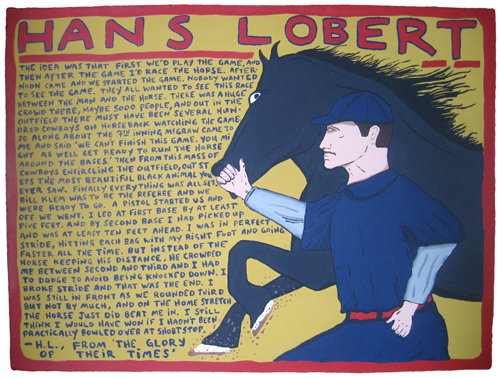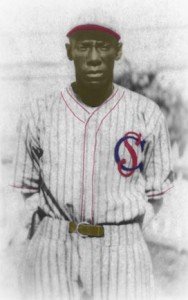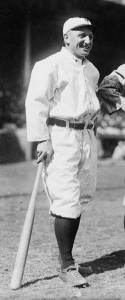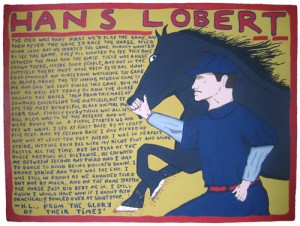Historical Hitter November 16th 1911: Hans Lobert

International baseball is not a new occurrence, and in the years before the First World War, major league teams played numerous exhibition games overseas. The focus is on Cuba, and the year is 1911, Three major league teams visited the Island Nation in November and December & January 1911-12; the World Champion Philadelphia A’s, their World Series rivals the New York Giants, and hometown rivals the Phillies.
Moreover, the baseball relationship between Cuba and the US, is as old as the major leagues. Before the 1920’s it was commonplace for Major League teams to escape the cold and beginnings of winter for the warmer climates of the Caribbean, specifically to play ball in Havana Cuba.
Generally these trips featured a dozen games with two of Havana’s best teams, Habanna or sometimes Habana Park and the Almendares. Additionally, one or two exhibition games were played with a Negro Leagues Select team or the Royal Giants of New York.
The Reds Tigers, Giants, Athletics, and Phillies are on record for visiting Havana in the mid-winter offseason. The Reds were one of the first teams to successfully travel to Havana as early as 1908. This experience, helped provide the Reds as being the Cuban experts. No surprisingly, a few years later in 1911, Reds Manager Frank Bancroft acted as the GM for both the Phillies and Giants during their 1911 Havana Series Exhibitions.
Havana was a choice baseball destination due to games’ interest. The major leaguers were well received and well known on the island at that time. Sid Mercer in Sporting Life of 1911 noted that, “Havana is a better base ball town than any city of its size in the United States.” (Vol 57, No. 15). John Foster wrote in the 1911 Spalding Guide that games were seen by vocal and interested crowds who knew their baseball.
“…the crowds were large enough to fill the grounds, and the keen enjoyment of the Cuban spectators spirited enough to arouse the American players to their best efforts on the field.” (1911 Spalding Guide p. 95)
Bancroft was also clearly impressed with whom he saw and the level of baseball talent. He was quoted in the December 30, 1911 Edition of Sporting Life as sounding more akin to baseball prophet than baseball contemporary:
“…the cold fact remains that the Cubans are good ball players and win on their merits. American scouts in looking for talent will keep in touch with the coming young Cuban players, and I predict that many more will be grabbed up by the league teams in future years.” (Volume 58, Number 17)
Further Bancroft projected that, “I predict that it will not be many years before the World’s Championship will be played between the champions of America, Cuba and Japan and other foreign countries where baseball is getting a firm hold.” He would not be too far off, as Cuba is indeed an international Baseball Power, having won Three Gold Medals (’92, ’96 & ’04) and Two Silver Medals (2000 & ’08) in baseball competition in the Olympic games.
Bancroft could not have been more prophetic. It is the current generation ofCuban baseball players that are reshaping and invigoration Major League lineups. The list of defectors was once limited to just a few is now a flood of some of the best baseball talent on the planet making their way out of Cuba and into the Major League Ball parks.
In the years before World War One, Sporting Life published the following revisited Tennyson ode in response to Baseball’s globalization:
“SOMEWHERE, THE GAME IS PLAYED.”
By W. A. Phelon
There are no-games right with us, but around this happy world
There are spots where hits are bumping and the sizzling curves are hurled –
Down in Cuba, Porto Rico, and the far-off; Philippines
Men are batting, umps are roaring all the old familiar scenes.
Mexico and Venezuela, Burmah, Siam, Yucatan,
And a dozen pretty cities in the heat of old Japan –
Ball games still are drawing people dry your tears, bugs, and be glad
That the game is still played SOMEWHERE, and the whole world isn’t sad.
 In November 1911, from the 5th to the 21st,. the Philadelphia Phillies became global baseball ambassadors and traveled to Cuba to play an early November series against the two best teams in Havana, the Habana and Almendares teams. The Phillies played a total of nine games, going a respectfully 5-4. Their nemesis was Cuban Almendares, and Hall of Fame Pitcher, Jose Mendez. Mendez is regarded as the best Cuban player never to play in the Majors. In 1908 Mendez pitched 28 shutout innings against the Reds; additionally, in 1911 he beat the Phillies twice out of three starts, and shut them out in his second start. In the two box scores the Phillies scored one run and managed just nine hits in 18 innings against the Cuban Ace. John McGraw considered him the best pitcher his team faced in the baseball world; and was quoted as saying;
In November 1911, from the 5th to the 21st,. the Philadelphia Phillies became global baseball ambassadors and traveled to Cuba to play an early November series against the two best teams in Havana, the Habana and Almendares teams. The Phillies played a total of nine games, going a respectfully 5-4. Their nemesis was Cuban Almendares, and Hall of Fame Pitcher, Jose Mendez. Mendez is regarded as the best Cuban player never to play in the Majors. In 1908 Mendez pitched 28 shutout innings against the Reds; additionally, in 1911 he beat the Phillies twice out of three starts, and shut them out in his second start. In the two box scores the Phillies scored one run and managed just nine hits in 18 innings against the Cuban Ace. John McGraw considered him the best pitcher his team faced in the baseball world; and was quoted as saying;
“Without mincing words, John bemoaned the failure of baseball, himself included, to cast aside custom or unwritten law, or whatever it was, and sign a player alone, regardless of race or color.”
Mendez’s pitching dominated the tone of many of these exhibitions, and the 1911 Phillies experienced humbling effects of his dominating fastball and superior pitching. As the baseball phrase goes, great pitching stops good hitting.
Baseball-reference.com lists the Phillies averages from this nine game series. Not surprisingly, the team’s batting average was an anemic .229, going 68 for 296. In 8 games the Phils scored a total of 22 runs, only an 11 run outburst in one game brought their average runs per game over 3. Overall, the Phillies had an OBP of only .281, a team OPS of .574
 Thus the hitter for mid-November is Philadelphia Phillies’ third baseman Hans Lobert, who hit .343 going 12 for 35 with one double and triple in the 1911 Havana Exhibition Series. He was the only Phillie to garner a double digit hits total. He was the Phillies player-manager was well for this series.
Thus the hitter for mid-November is Philadelphia Phillies’ third baseman Hans Lobert, who hit .343 going 12 for 35 with one double and triple in the 1911 Havana Exhibition Series. He was the only Phillie to garner a double digit hits total. He was the Phillies player-manager was well for this series.
Hans Lobert broke in the Pirates in 1903 and played a total of 14 seasons in the majors, playing with the Reds, Phillies, Giants, Cubs, and Bucs. His best years were from 1911 to 1914 when he hit .293 in almost 500 games with the Phils, but his most time was spent wearing the red and white of Cincinnati from 06 to ’10. Of the total 1249 games he played 1000 were at third base, and all but 23 games were played as an infielder. Overall he was a career .274 hitter who stole over 300 bases averaging over 40 per year in his prime. Phillies Nation web site lists Lobert as number 83 of the 100 greatest Phillies.
He is the most accomplished baseball player to attend the academically-rigorous Carnegie-Mellon University of Pittsburgh. It was his keen intellect that kept him in the game for the longest of any person. He was a Major League coach and manager, a collegiate Coach at West Point, a minor league manager, and full-time scout. All told his baseball career started on September 21, 1903 with the Pirates rookie third baseman and lasted until his death on September 14, 1968 as a scout for the Phillies. It was an amazing nearly sixty-five year-long career.
 His game was suited well for the Dead Ball Era, as he was known as the fastest player of his era. He was famous for racing a horse around the infield during a 1913 Giants/White Sox World Tour game in Oxnard California. For the record, the Horse won the race around the base paths. In 1910 he set a record time of 13.8 seconds around the bases, and was noted for beating Jim Thorpe and collegiate track star of the day Vince Campbell in footraces. Some sports reporters of the day projected that Lobert could be an Olympic Champion at 110- and 440- yard sprint. Lobert has since been immortalized in Folk Artist Will Johnson with this painting of Lobert racing the horse in Oxnard.
His game was suited well for the Dead Ball Era, as he was known as the fastest player of his era. He was famous for racing a horse around the infield during a 1913 Giants/White Sox World Tour game in Oxnard California. For the record, the Horse won the race around the base paths. In 1910 he set a record time of 13.8 seconds around the bases, and was noted for beating Jim Thorpe and collegiate track star of the day Vince Campbell in footraces. Some sports reporters of the day projected that Lobert could be an Olympic Champion at 110- and 440- yard sprint. Lobert has since been immortalized in Folk Artist Will Johnson with this painting of Lobert racing the horse in Oxnard.
[divider]
Sources:
Sporting Life, Vol 57, Number 15, December 17, 1911
1911 Spalding Baseball Guide, John Foster, p. 95.
Baseball-almanac.com
Baseball-reference.com
Jose Mendez:
http://baseballhall.org/hof/mendez-jose
http://en.wikipedia.org/wiki/Jos%C3%A9_M%C3%A9ndez
Hans Lobert:
http://philliesnation.com/archives/2009/01/100-greatest-phillies-83-hans-lobert/
SABR BioProject, Jonathan Dunkle, http://sabr.org/bioproj/person/1b9e4885
